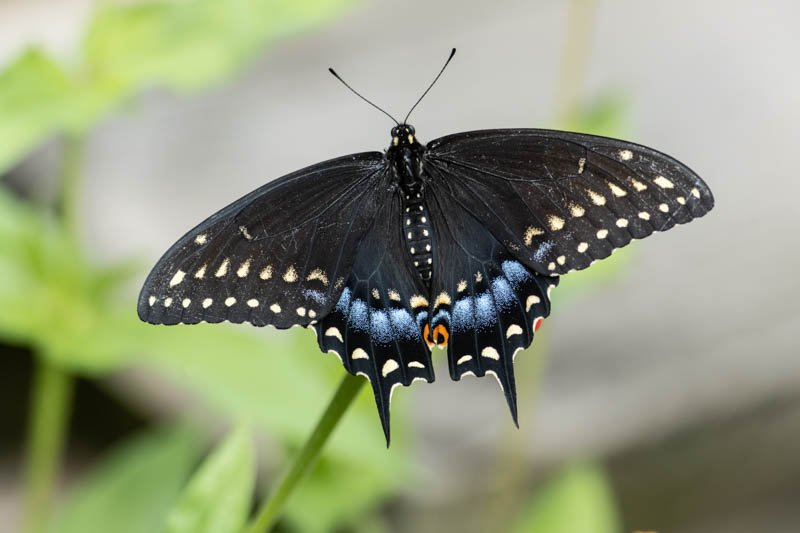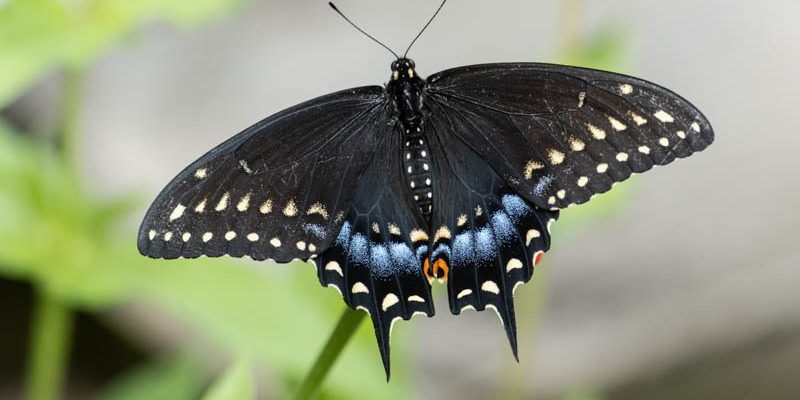
So, where exactly do these colorful creatures call home? And how do they adjust to different surroundings? Let’s take a journey through the world of swallowtails, exploring their habitats and the incredible ways they adapt to thrive.
The Swallowtail Butterfly’s Habitat
Swallowtail butterflies are found across the globe, except in extreme desert and polar regions. They favor temperate and tropical climates, often residing in areas rich with diverse plant life. You might see them in gardens, meadows, forests, and even near wetlands. Their vibrant colors are not just for show; they help them blend into the colorful flowers and green leaves of their environments.
In North America, the Eastern Tiger Swallowtail is one of the most common types. You can spot them in open woodlands or around rivers, flitting from one flower to another. Meanwhile, in Europe, the Swallowtail (Papilio machaon) prefers meadows and areas full of blooming herbs. These butterflies are adaptable, often migrating to find favorable conditions and food sources.
Floral Preferences and Feeding
Swallowtail butterflies are attracted to a variety of flowers. They’re not picky eaters; in fact, they love nectar from:
- Lilacs
- Milkweed
- Sunflowers
- Butterfly bush
Their long proboscis, which looks like a straw, allows them to sip nectar from deep within flowers. This feeding behavior not only sustains them but also plays a crucial role in pollination, helping plants reproduce. So, when you see a swallowtail, know that it’s doing more than just looking pretty—it’s actively helping the ecosystem!
How Swallowtails Adapt to Their Environment
Adaptation is key to the survival of the swallowtail butterfly. Whether it’s changing their diet or altering their behavior, these butterflies are masters of adjustment. So, how do they do it? Let me explain.
First off, swallowtail caterpillars are known for their remarkable ability to blend in with their surroundings. When they’re young and vulnerable, they often resemble bird droppings or foliage, which helps protect them from predators. This clever camouflage means predators are less likely to spot them. As adults, their striking wing patterns can also confuse birds and other predators, giving them a fighting chance to escape.
Behavioral Adaptations
Aside from their physical adaptations, swallowtails also change their behavior based on their environment. For example, in areas with high predator presence, they might become more active during the day when it’s warmer, allowing them to fly faster and avoid danger. In contrast, in cooler climates, you’ll find them basking in the sunlight to warm up before taking flight.
Swallowtails are also known to migrate. For instance, the Western Tiger Swallowtail often migrates in search of food and suitable breeding grounds. This instinctual movement ensures they always have access to resources, enhancing their survival rate.
Swallowtail Butterfly Life Cycle and Its Importance
The life cycle of a swallowtail butterfly is just as fascinating as their habitat. They undergo complete metamorphosis, which includes four stages: egg, larva (caterpillar), pupa (chrysalis), and adult butterfly. Each stage plays a crucial role in their development and adaptation.
During the egg stage, females lay their eggs on specific host plants, ensuring that when the caterpillars hatch, they have ample food. As caterpillars, they grow quickly, shedding their skin several times before entering the pupal stage. Here, they undergo a remarkable transformation that’s essential for their survival.
You might be wondering why this life cycle matters. It’s simple: the longer they can survive in their environment, the better they contribute to their ecosystem. They pollinate plants, which helps them reproduce, and serve as prey for various animals in the food chain. This delicate balance maintains the health of their habitats.
Threats to Swallowtail Butterflies
Despite their adaptability, swallowtail butterflies face several threats today. Habitat loss is one of the significant issues, primarily due to urban development and agriculture. As natural landscapes are replaced with buildings or monoculture farms, swallowtails lose their feeding and breeding grounds.
Additionally, pesticides pose a severe risk. Chemicals used to target pests can unintentionally harm non-target species, including these beautiful butterflies. Climate change also affects their habitats, altering the availability of flowers and suitable climates for migration.
Conservation Efforts
Fortunately, there are ways we can help preserve swallowtail populations. Creating butterfly-friendly gardens with native plants can provide essential habitats.
Here are a few tips:
- Plant nectar-rich flowers.
- Include host plants for caterpillars.
- Avoid pesticides whenever possible.
- Support local conservation efforts focused on protecting habitats.
Every little action helps ensure these magnificent creatures continue to flutter gracefully in our gardens and wild spaces.
Final Thoughts on the Swallowtail Butterfly
The swallowtail butterfly is a remarkable example of how nature thrives despite challenges. From their stunning colors to their ability to adapt, these butterflies capture our imagination and play an essential role in our ecosystems. By understanding where they live and how they adapt, we can better appreciate their beauty and the importance of protecting their habitats.
So, the next time you see a swallowtail fluttering by, take a moment to enjoy it. Remember all the incredible adaptations that allow it to thrive. Whether it’s sipping nectar or blending in with its surroundings, there’s so much more to these butterflies than meets the eye.

